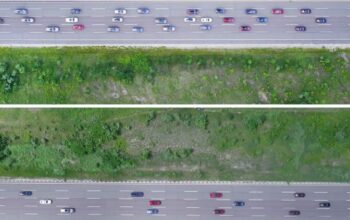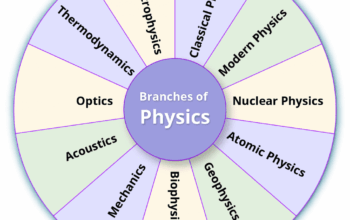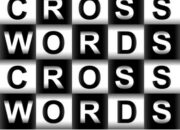The year 2023 marks a significant milestone in the annals of scientific and military history—the 60th anniversary of the atomic bomb. This somber commemoration invites an exploration of the intricate interplay between physics and warfare, a relationship steeped in ethical quandaries and existential questions. How does one measure the achievements of science against the backdrop of destruction? This question underscores a potential challenge: can the field of physics rise above its associations with warfare and destruction, or is it inextricably linked to the machinery of conflict?
As we venture into this discourse, it becomes essential to appreciate the historical context surrounding the bomb’s inception. The Manhattan Project epitomized a transformation in the field of physics, where theoretical constructs transitioned into practical applications with devastating consequences. Beginning in the 1930s and culminating in 1945, an assemblage of brilliant minds converged to harness nuclear fission—an atomic process that would irrevocably alter the landscape of warfare and international relations. The resultant weapon not only marked a pivotal moment in military strategy but also catalyzed an epoch defined by Cold War tensions.
What methodologies were employed in this colossal scientific endeavor? The complexities of nuclear physics necessitated an interdisciplinary approach, encompassing the realms of chemistry, engineering, and even meteorology. The development of the bomb required intricate understanding of neutron behavior, critical mass, and material properties. The early work of physicists such as Enrico Fermi and J. Robert Oppenheimer laid the theoretical groundwork. Herein, we find ourselves confronted with an ethical conundrum: the very minds that contributed to the project were also cognizant of the catastrophic implications of their discoveries. How do scientists navigate this duality of purpose, wherein their contributions advance humanity’s potential while simultaneously harboring the capacity for unprecedented destruction?
The deployment of atomic weapons in Hiroshima and Nagasaki serves as a poignant reminder of this duality. The immediate effects of the bomb—massive loss of life and immense suffering—forced a reassessment of the values underpinning scientific inquiry. The philosophical implications became apparent: does the pursuit of knowledge justify its applications? The fallout weighed heavily not only on the survivors but also on the moral compasses of subsequent generations of physicists. In the decades that followed, the scientific community grappled with its responsibility in shaping a world defined by nuclear capability.
As we reflect on the legacy of the atomic bomb, it is crucial to examine subsequent developments in physics that were influenced by this watershed moment. The post-war era witnessed the proliferation of nuclear weapons, accompanied by an arms race that seemed to validate the destructive potential of the original invention. The strategic doctrines of deterrence emerged, framing nuclear weapons as instruments of peace through the paradoxical strategy of mutually assured destruction. Here lies the irony: Physics, which aims to unravel the mysteries of the universe, became a tool for geopolitical maneuvering.
The evolution of nuclear technology prompted an influx of research initiatives focused on nuclear energy. The very principles that enabled weaponization became the foundation for civilian applications, engendering a vital energy sector. Could it be that the atomic bomb’s grim legacy serves as a poignant reminder of the potential for scientific advancements to fuel progress rather than destruction? Moreover, should we recognize the responsibility that comes with such power? The challenge posed to contemporary physicists is whether they can harness this dual nature of their discipline to foster global cooperation rather than estrangement.
Yet, the reverberations of the atomic bomb extend beyond military and energy applications. Inquiring minds must wrestle with its implications for ethical frameworks in science. As physicists embrace their role in society, they are increasingly confronted with the ethical ramifications of their work. Can a balance be struck where scientific progress is pursued alongside a steadfast commitment to humanitarian principles? The notion of scientific responsibility emerges as a central theme, advocating for an integrative approach that recognizes the broader implications of research endeavors.
Interestingly, the dialog surrounding nuclear weapons and physics has shown signs of evolution over the years. Advocacy for disarmament and non-proliferation agreements has gained traction, driven by the desire to avert catastrophic outcomes. Prominent physicists and public intellectuals have championed initiatives aimed at curtailing the nuclear threat, suggesting tangible pathways for engagement in international diplomacy. Such endeavors underscore the inherent paradox of the atomic bomb’s legacy: how to harness the lessons of the past to forge a more secure and collaborative future.
As we commemorate the 60th anniversary of the bomb, the question arises: Can a discipline so closely tied to destruction also serve as a catalyst for peace? The inherent challenge lies not solely in the scientific discoveries themselves but in how these discoveries are contextualized within the fabric of human existence. Physics, in the shadow of war, possesses a unique potential to facilitate dialogue around peace and reconciliation.
In conclusion, the legacy of the atomic bomb is a rich tapestry woven with both the brilliance of human intellect and the sobering acknowledgment of its destructive capacity. The 60-year commemoration serves as an opportunity to pause, reflect, and engage in critical conversations about responsibility, ethics, and the future trajectory of physics. The ongoing challenge remains: can we navigate the treacherous waters of our past to construct a more hopeful and peaceful future? The answer lies not only in understanding physics but also in our collective commitment to using knowledge as a force for good.










